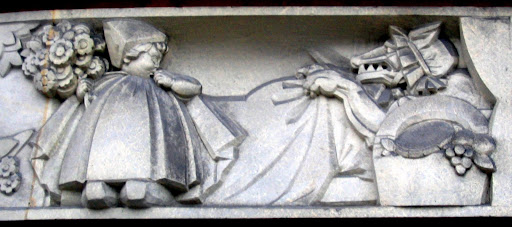Here is an extract from the editorial in the issue written by Michael Fielding.
The absolute importance of history and, in particular, the history of education in our own countries is again underscored by Catherine Burke’s The Decorated School: past potency and present patronage. Not only does it help us understand the origins of the present, it helps us re-see what presumption, exhaustion and hegemonic incorporation too often obscure, distort or discard. In the remarkable Decorated School project academics, young people, teachers and community members are coming together to rediscover, and in some cases restore, the murals, reliefs, stained glass, wall tiles, decorated floors, textile and sculptures that once formed part of a movement in education that exemplified Henry Morris’s beliefs about the educative power of the built environment which preface the article thus: ‘The design, decoration and equipment of our places of education cannot be regarded as anything less than of first-rate importance -- as equally important, indeed, as the teacher. There is no order of precedence -- competent teachers and beautiful buildings are of equal importance and equally indispensable.’ It is difficult to think of a more stark contrast to the recent government insistence that new state schools ‘should have ‘no curves or ‘faceted’ curves’, corners should be square, ceilings should be left bare and buildings should be clad in nothing more expensive than render or metal panels above head height. As much repetition as possible should be used to keep costs down’ (Booth, 2012). Of the many fascinating issues that emerge in the article amongst the most compelling is the journey from public art as itself an educator, through its partial displacement by the sometimes invasive imperative to display children’s work, via the managerialist arrogance of supplanting both with curtains of concealment and the self-regarding installation of carpeted corridors to the headteacher’s office (a real example from the paper!), through to the co-option of both art and architecture in the drive to contrive a simulacra of distinctive school ethos as a key seducer of parental choice in the education market-place. Trying to map and understand this journey, not only through actual artifacts and written records, but also through interviews with children to try to understand what sense they made of ‘the removal, concealment or destruction of art objects that had become a feature of their everyday worlds’ is a profoundly important undertaking.
